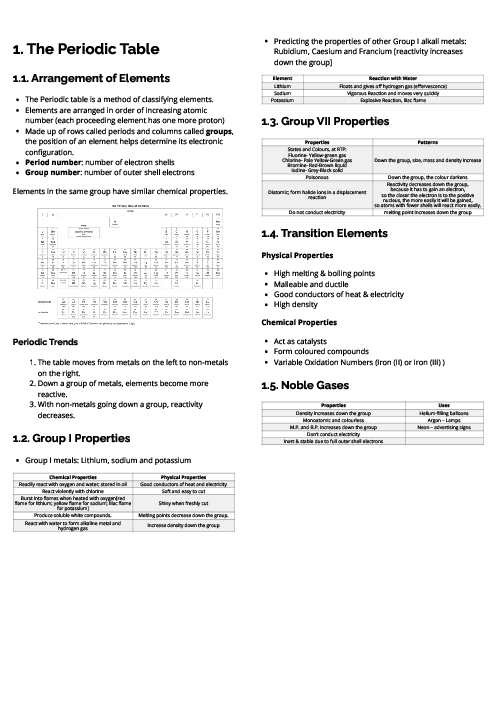Chemistry (0620) The Periodic Table Revision Note
Hestia Laurent
This document explains the periodic table for CAIE IGCSE Chemistry, focusing on the arrangement of elements and group properties. Elements are organised by increasing atomic number into periods (rows) and groups (columns), where the period indicates the number of electron shells and the group shows the number of outer-shell electrons. Elements in the same group share similar chemical properties, and general trends are outlined: metals are on the left, non-metals on the right, with reactivity increasing down metal groups but decreasing down non-metal groups. Group I (alkali metals), including lithium, sodium, and potassium, are soft, conductive, highly reactive with water and oxygen, and form soluble white compounds. Their reactivity increases down the group, with vigorous to explosive reactions. Group VII (halogens), such as chlorine, bromine, and iodine, are diatomic, coloured, poisonous, and show decreasing reactivity but increasing melting/boiling points down the group. They undergo displacement reactions to form halides. Transition elements are described as dense, strong, with high melting points, good conductivity, variable oxidation states, and use as catalysts while forming coloured compounds. Noble gases are inert, monoatomic, colourless, with low reactivity due to full outer shells, and have applications in balloons, lamps, and signs.
See More Study and Revision Guide 3 months ago
Chemistry (0620) Subject directory
All resources in one place
Related Past Papers
Related Tutorials
Crash report

